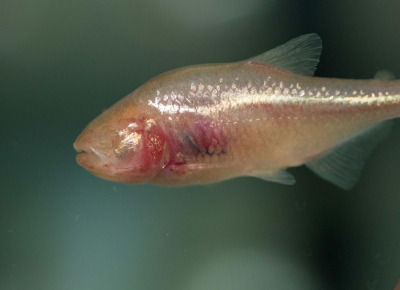
Blind cave fish compensate for their lack of sight by having a more sensitive lateral line system which detects vibrations or changes in pressure in the water. The lateral line is a specialized sensory organ found in fish. It is a canal system running just under the skin along each side of the fish’s body.
The blind cave fish has skin covered with a layer of scales arranged in head-to-tail pattern, similar to shingles on a roof. These scales play a protective role for the fish and reduce drag when swimming. Fish also secrete a layer of mucus that covers their body, further reducing drag in the water. The mucus also helps prevent infection by serving as a barrier to microorganisms and also makes the fish slippery and difficult for predators to catch.
Blind cave fish compensate for their lack of sight by having a more sensitive lateral line system which detects vibrations or changes in pressure in the water. The lateral line is a specialized sensory organ found in fish. It is a canal system running just under the skin along each side of the fish’s body. This canal is lined with special receptors that are quite sensitive to vibrations and water currents and thus it is an “extended sense of touch” allowing the blind cave fish to detect obstacles at a distance. Using this heightened sense helps blind cave fish find food and avoid bumping into obstacles.
Credit : Denver Zoo
Picture Credit : Google



